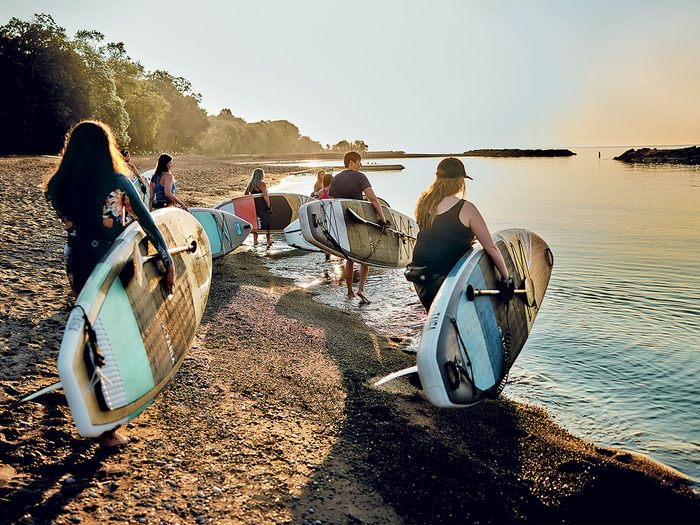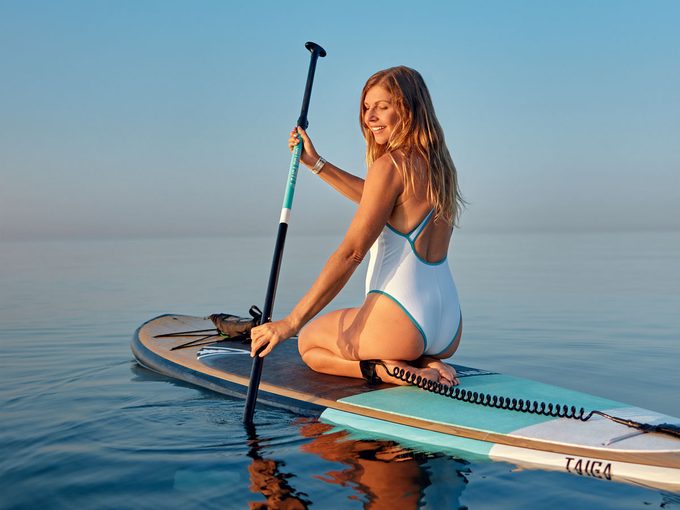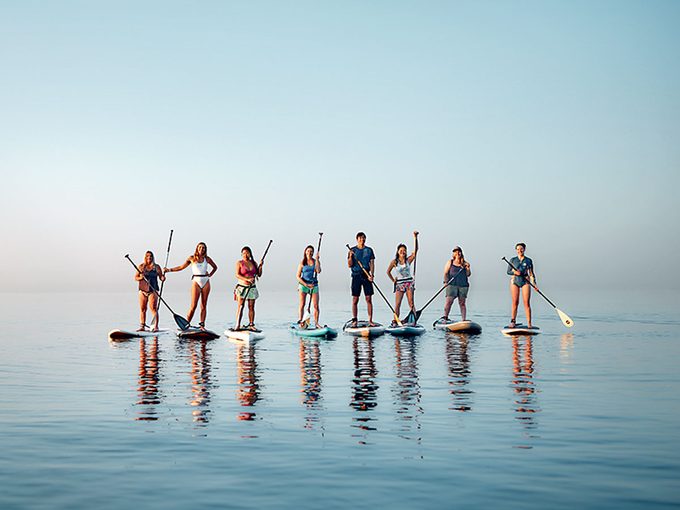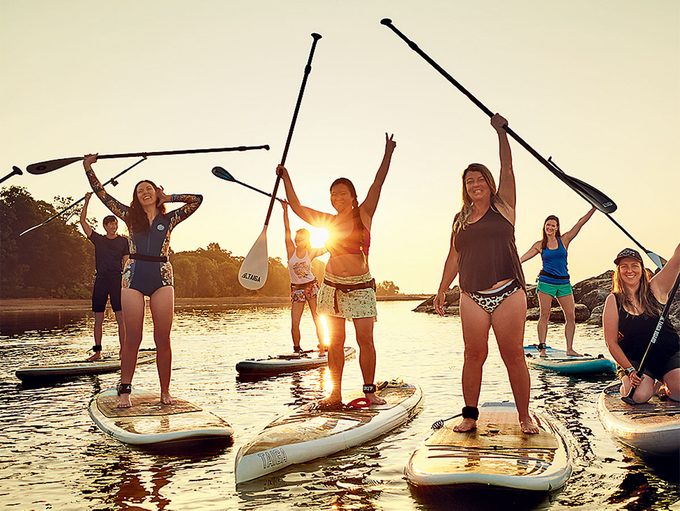Why You—Yes, You!—Have Got to Try Stand-Up Paddleboarding

SUP is a joyous water sport that is good for every age, every body and every ability.
While the sport has roots in surfing, SUP is unique. Unlike surfing, where you lie down and use your hands to move forward and then pop up into a standing position, SUP typically starts with you kneeling or standing on your board while using a paddle to steer and glide over the water.
Today, SUP is one of the world’s fastest-growing water sports, but it’s steeped in history. Civilizations around the world have been propelling themselves (and their watercrafts) this way for centuries. The earliest roots of what we now recognize as SUP can be traced to the Hawaiian Islands, where there’s a rich history of the local Indigenous peoples surfing and using paddles to swim out to big waves. It’s also in Hawaii where SUP first developed as a sport: In the 1940s, Waikiki surfer John Ah Choy, who had trouble standing up on his board as he aged, began using a paddle to get out on the water. His sons, surf instructors Bobby and Leroy, as well as friend and surfing icon Duke Kahanamoku, copied Ah Choy’s technique while they monitored waves, took photos and kept an eye on their students. The more modern-day iteration of SUP gained traction in the 2000s after Californian surfers Laird Hamilton and Dave Kalama started teaching the technique, too, kickstarting SUP’s popularity around the world.
(Related: The Life-Boosting Powers of Cold Water Swimming)

Part of that popularity is due to how easy SUP is to pick up: Although knowing how to swim is important, no other experience is necessary. Janna Van Hoof, owner and teacher of SUPGirlz, aims to make SUP an inclusive sport regardless of age or fitness level, though she does recommend first-timers take a lesson with a certified instructor. Beyond the basics, a coach will teach you proper form and technique, along with all the safety guidelines.
SUP also offers a ton of physical and mental benefits. A pioneer of paddleboarding culture in Toronto, Van Hoof says that her overarching SUP philosophy is all about well-being and the perks of being out on the water.
“Stepping out of your comfort zone and learning a new skill is good for your body and brain,” she says. “I feel my creativity heightened and my stress melts away like I’m floating into a calmer person. Paddling can feel like meditation in action.”

The science agrees: A recent meta-analysis of 50 studies found that proximity to a water source might have several benefits, including improved sleep and mood, increased physical activity, more opportunities for social interactions and a sense of calm. Plus, Canada is spoiled for lakes—and SUP is an ideal way to explore the thousands of kilometres of coastal and inland passages.
For the SUP-curious, you’ll simply need two pieces of equipment: a board and a paddle with a leash (for easy retrieval). If space is an issue, opt for an inflatable board like one from Canadian brand Maddle. Most importantly, invest in a good paddle. “It’s your engine,” says Van Hoof.
While most people take up SUP for fitness or leisure, it’s also a professional sport with worldwide competitions. Many believe it should be considered for inclusion in future Olympics. Whatever your motivation, once you step onto your board, there’s so much you’ll get out of being in the water.

Need more convincing? Here are the health benefits of stand-up paddleboarding:
SUP is a full-body workout
SUP engages your entire body—including legs, back, shoulders, arms and core.
SUP helps improve balance
The challenge of steadying yourself on the board is an excellent way to strengthen the muscles we use for balance. This skill is important to maintain as you age, as it can help prevent injuries, says Alison Fong, a registered physiotherapist at Cleveland Clinic Canada.
SUP is low-impact
SUP is a low-impact activity, so it’s easy on the joints, making it a good option for those with issues such as hip or knee discomfort, says Fong.
SUP strengthens your core
Stabilizing your body on the board and through the water is a core crusher. Strengthening your core will improve your body’s movements while performing daily activities, says Fong.
SUP provides a natural high
“Exercising in natural environments has greater physical and mental health perks than indoor activity,” says Fong. Immersing yourself in nature has been proven to lower rates of depression, stress, anxiety and obesity. Plus, outdoor activity provides a boost in vitamin D, which keeps muscles and bones healthy and facilitates immune system function, says Fong.




